Of the many East London street markets, a few remain committed to serving the local population.
Brick Lane; forget it. Columbia Road; full of tourists. Petticoat Lane? Called Middlesex Street since the Victorians took umbridge at the name, it’s a shadow of it’s former self.1 Leadenhall Market has only one shop that gives any clue to its former glory. Leather Lane is now a food court of lunchtime stalls. Spitalfields; lost its soul; it might as well be Covent Garden.2
I’m fascinated by the fluctuating nature of the East End of London.
Artist Rachel Lichtenstein in her presentation of her memory map of the Jewish East End, written in 2020 said;
‘‘In 1976 the building that had once been a Huguenot Chapel before it became the Spitalfields Great Synagogue (also known as the Machzike Hadath) was sold to the Bangladeshi community and became The Brick Lane Mosque. It holds up to 4,000 worshippers at a time and is now as packed on Ramadan as it once was on Yom Kippur. High on the wall, above the Fournier Street entrance, is the Latin inscription ‘Umbra Sumus’, which translates to ‘We are Shadows.’’’
The East End is rich with the history of migrant communities who made it their home, from seventeenth century Scandinavians and French Huguenot, Chinese and Irish weavers. The wave of Jewish emigres in the 1880s, driven here by poverty and pograms, to German, South-East Asian and African Caribbean communities. All adding a mixture of folklore, language, culture, religious practices and skilled trades to the mix.
On Brick Lane only the two beigel shops remain as a reminder of the predominantly Jewish population that called the East End home. I'm intrigued to know, if the current population moves on, which culture and community will paint their colours into the streets of East London. As long as they can afford to live there.
The East End was categorised as a place where the working poor dwelt. If we stick to that definition, there are a growing number of East London postcodes where the working poor can no longer afford to live.
Queens Market lies between East and West Ham to the east and west. To the south by the river is London City Airport. Travel north from the market and you reach Forest Gate, Wanstead Flats, Woodford and Ilford; the beginnings of Essex where many of the Jewish population gravitated towards on leaving the East End.
In Poplar, near the docks, Chrisp St market continues. And Queens Market battles on, tooth and nail to preserve what’s theirs. The Friends of Queens Market say ‘‘the planning system has haunted Queen’s Market since 2004’’.
If you emerge from Upton Park station onto Green Street, the shops are like male peacocks, displaying a dazzling range of saris and materials, gold jewellery, and new season mangos. It's a thriving, vibrant mixture of small shops, cafes and restaurants.
Building works cover the market approach from the street. Walk inside to the vast hanger of a market, slightly underlit and ragged around the edges where the colours on the stalls light up the space.
On a rainy Tuesday lunchtime the market is packed, serving the predominantly Asian population.
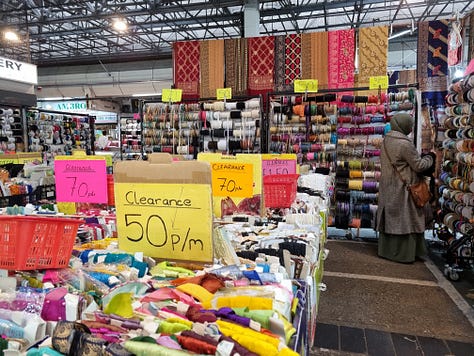

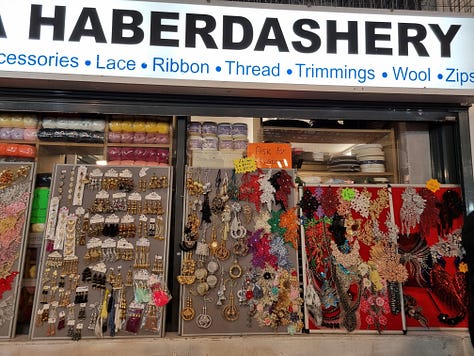
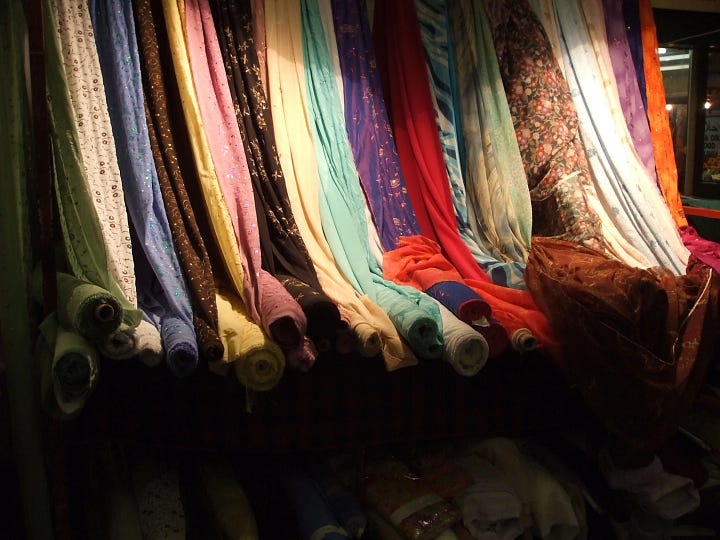
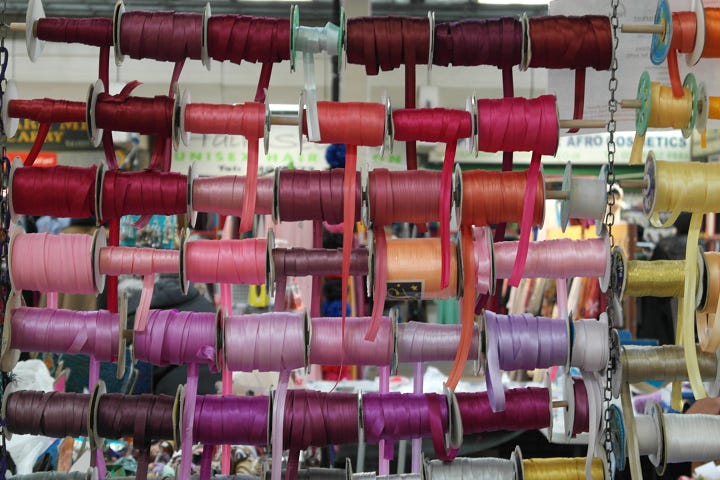
The first stalls sell materials, rolls of brightly coloured cloth. Buttons, ribbons, oil cloth in tempting arrays. I can never resist a haberdashery stall. Next there are clothing stalls including a natty array of Hawaiian shirts.

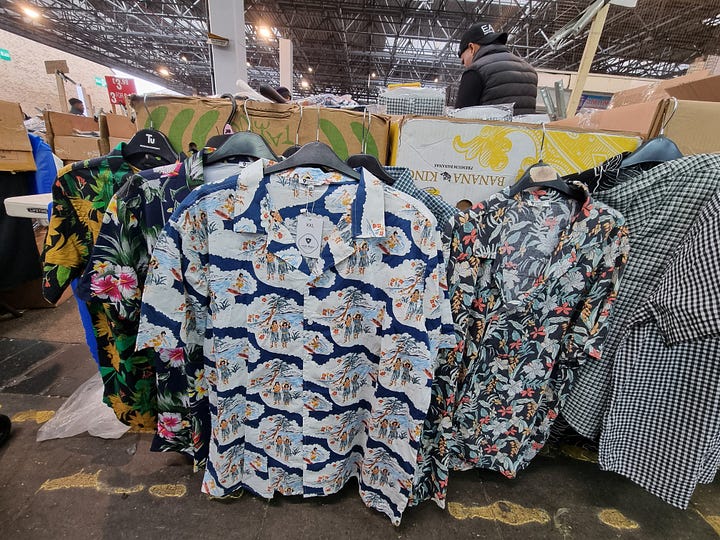
Tables are covered with shiny kitchenware. Aluminium cooking pots, tagines, electrical goods.
Book-ending the centrally placed stalls; butchers shops. A fish market. General grocers selling huge sacks of rice. Butchers sell everything from sheeps heads and tripe to venison.
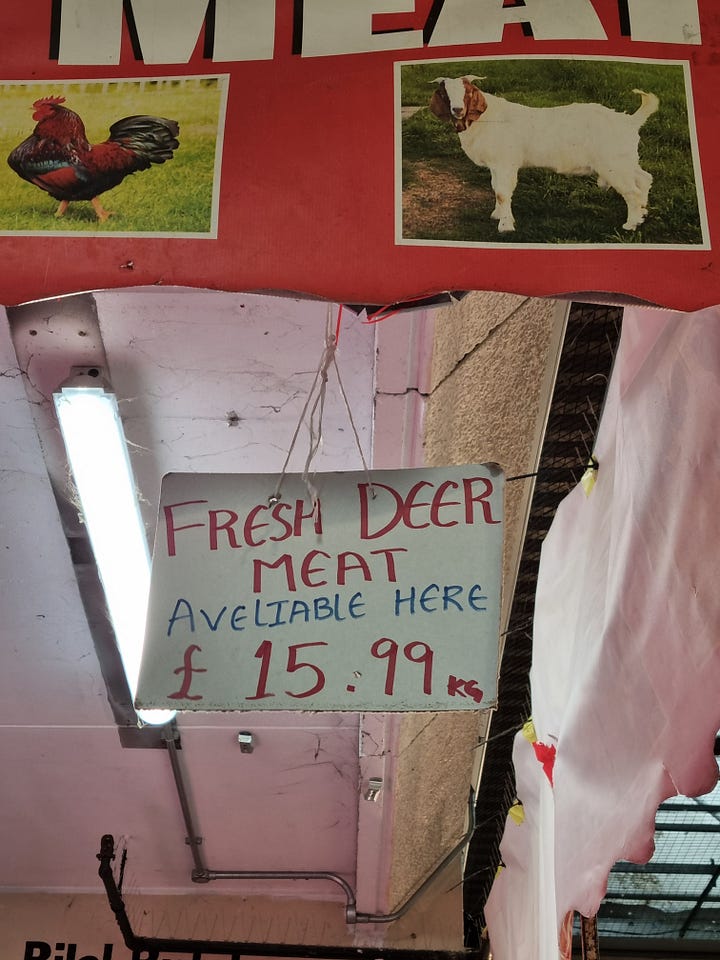

This isn’t a market that cares about the seasons. It knows what it is, no pretensions. Queens Market is all about the bargain, serving what the community wants.
Most vegetable stalls display variations of the same products with price and quality differing. The butchers are crowded. The only empty one has a big red and white pork sign.
It's thanks to The Friends of Queens Market that the market is still here. In a fight lasting for ten years, they headed a campaign to see off a development plan that would have changed the face of the market in favour of luxury flats. They managed to get the market designated as an asset of community value but their fight is ongoing.
A market balances on a toothpick. They’re fragile things, encompassing the entirety of the local community who shop and supports it, in addition to the stall holders and framework that keep the market going. Make changes, and it can all snap and fall.
It’s one thing to want to improve infrastructure; mend the roof, improve the lighting, bring in new stalls, clean the market every week. It’s quite another to want to make the market smaller and put luxury flats on top of it. Or to want to close it.
Queen’s Market is named after Queen’s Road, previously known as Queen’s Road Market. It is believed that the name derives from Anne Boleyn. Where Green Street meets Barking Road is the Boleyn pub. Green Street House was known as “Boleyn Castle” because of a supposed association with Anne Boleyn. This is the former home of West Ham football club before it moved to the Olympic Park stadium.
Up to the turn of the 20th century, the market ran along Green Street. It moved to its present site in 1904 to allow trams to operate without running over costermongers.
Unusually, it’s a street market with a cover that went on in the 1960s.
To quote from ‘London Postcode Walks’ :- ‘‘The current building I believe dates from the late 1960s but has been “updated”. Pevsner does not like this saying “An unappealing tall slab of flats rises behind the dismal Queens Market and multi storey car park, the latter not improved by the borough’s garish cosmetic reclading of 1992, reminiscent of cheap bedroom furniture”


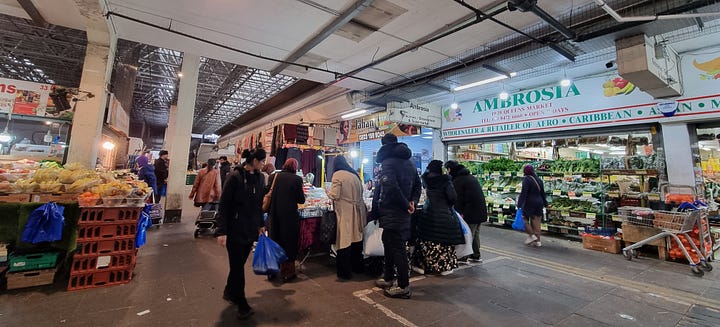
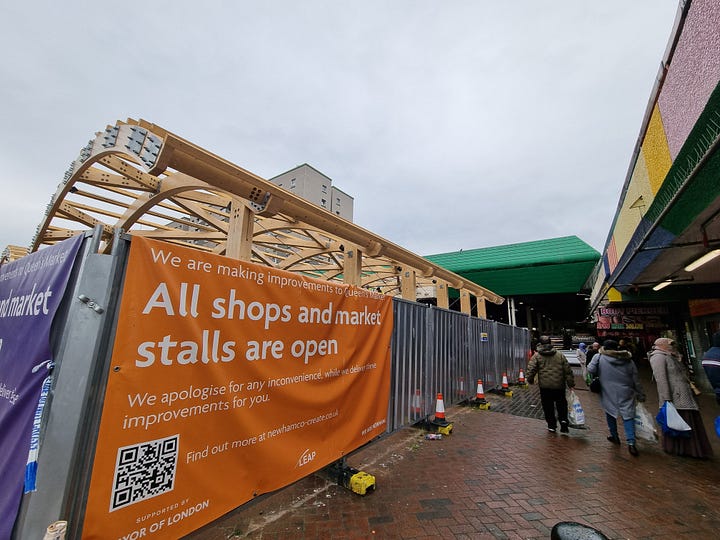
Unlike street markets, there are tannoy announcements, ‘watch out for pickpockets’ in-between welcoming you to the market.
In 2012 the market was made famous by the £1 fish man who had only been in the UK a year and found that his catchy market call had gone viral.
Walk further down the market, and the fruit and vegetable stalls emerge. Huge bunches and boxes of fenugreek, coriander, dill, mint and many other herbs I don’t recognise. Three categories of root ginger of differing quality with prices to match.
Bags of onions from India. Several types of aubergines. A mix of bowl sellers and by the box and kilo.



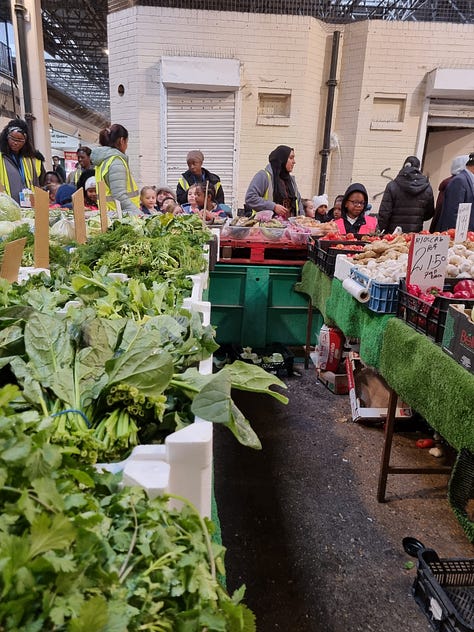


It’s a joy to see a crocodile of high vis clad wide eyed toddlers being led around the market by their teachers, being shown different fruits and vegetables.
Emerge into the light at the back of the market where a parade of fruit and vegetable sellers have customers lining up to examine and buy their produce.
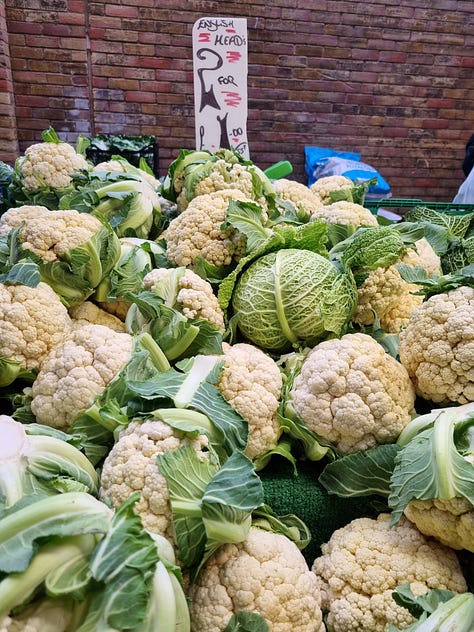

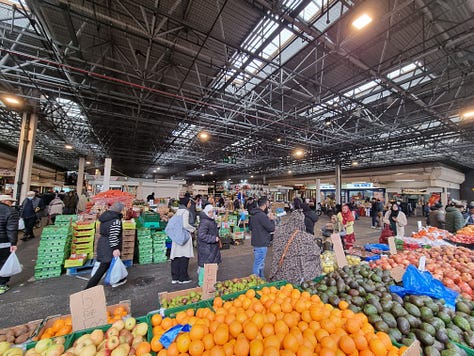
Back on the high street, it's the chain stores that look out of place. This is a neighbourhood that values independent shops. Their cherished market and the traders, some of whom have been here for many years, are at the heart of the community. I have the impression that the Friends of Queens Market aren’t going to take their collective eye off the market for a second.3
Thank you for reading. Sharing, commenting and liking this post does help new readers find me.
There will be an intermission over Easter, I'll be back with you hopefully on 28th April.
Recording a complaint dating from 1590, Survey of London notes that ‘An aura of nostalgia has clung to Petticoat Lane from its earliest times.’
As The Gentle Author remarked in his article on saving London’s markets for The Guardian in 2012, ‘The tension, between the essentially chaotic nature of markets and those who would like to control them, persists to our own day.’

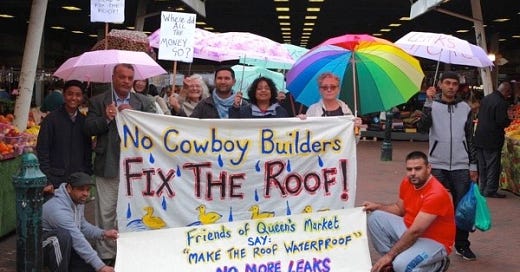



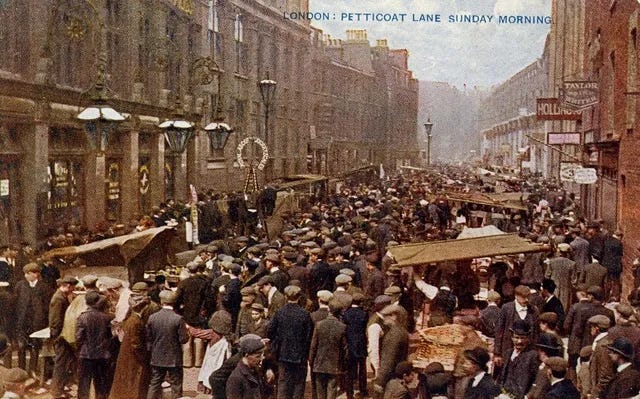



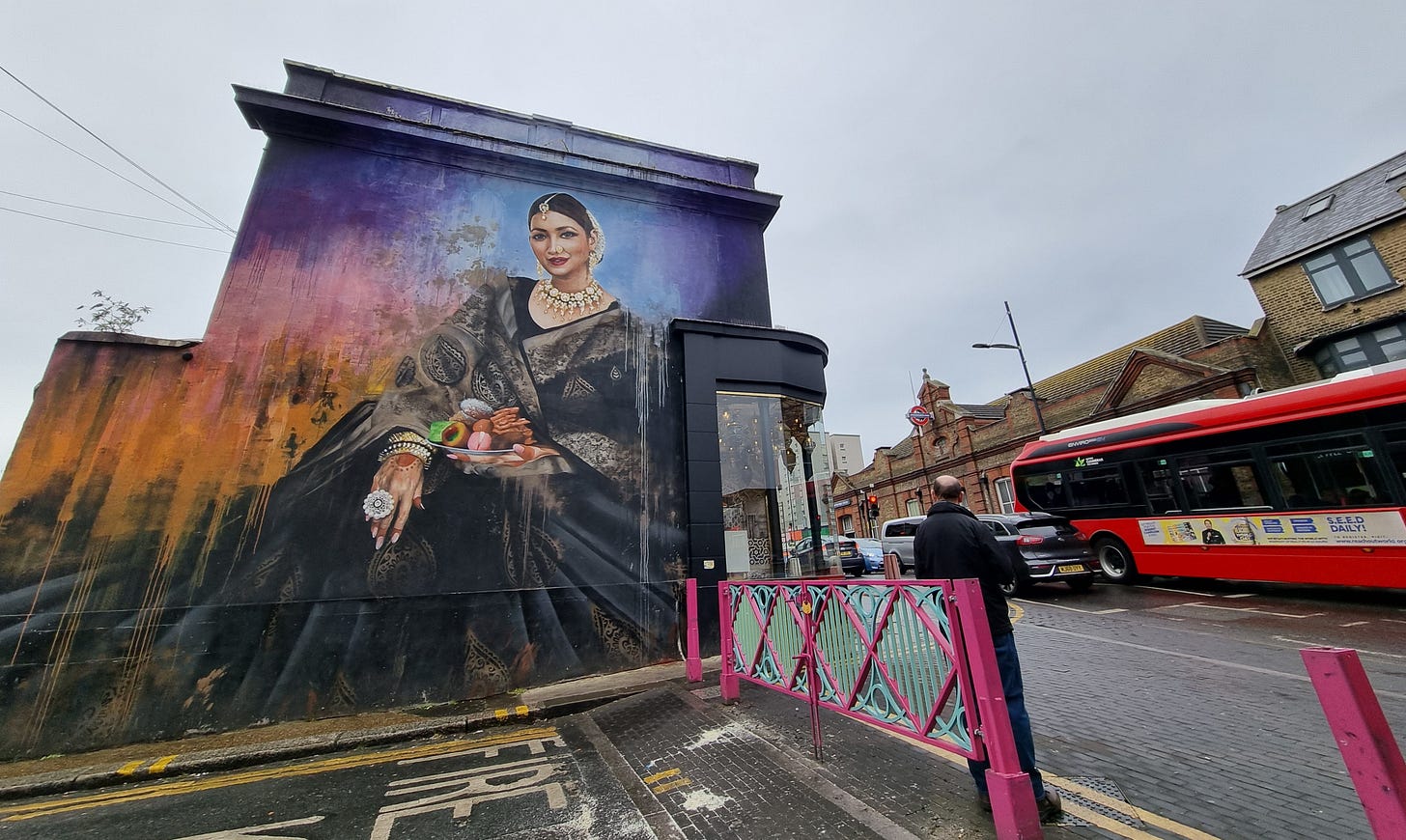



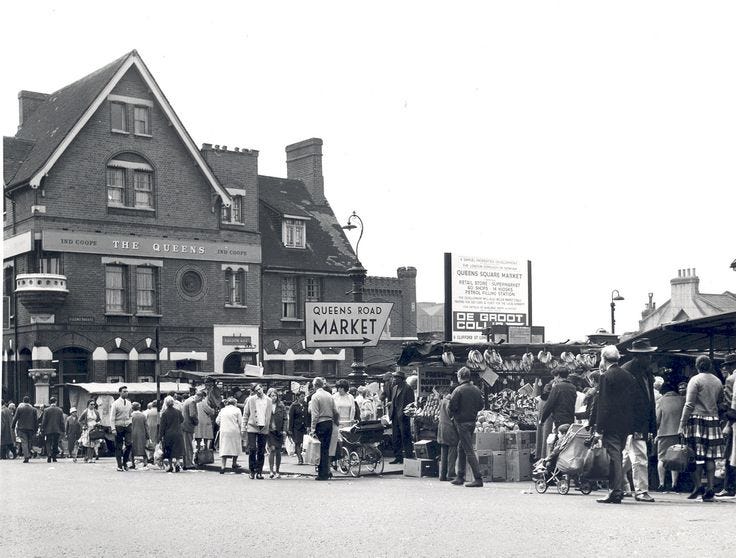

Never been but you write so atmospherically I feel I'm standing there.
putting Queens Market on my list for when I visit London!